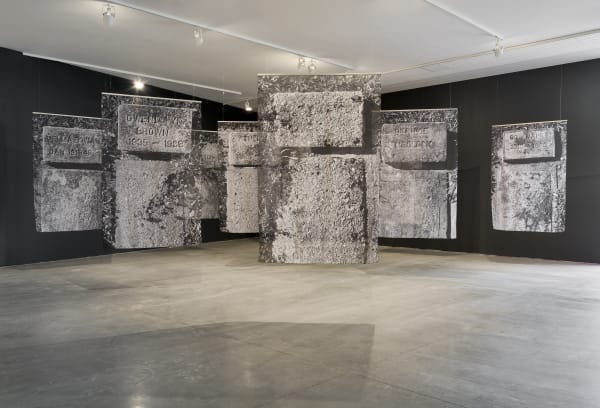Göteborgs Konsthall and the Hasselblad Foundation are hosting two exhibitions focusing on the years between the two world wars. The unique exhibition collaboration is part of the celebration of Gothenburg’s 400 year anniversary.
The Interwar period was a turbulent era both in Sweden and around the world. The period started with a pandemic, the Spanish flu, which turned out to be one of the worst to ever strike the world. In Sweden, women gained the right to vote in 1921 and the labour movement kept advancing their positions. During ‘the Roaring Twenties’, the Western World was characterised by a remarkable economic, social, artistic and cultural dynamism – coupled with political currents such as internationalism and pacifism. However, this development sparked counter movements in the form of fascism and Nazism. The conflicts escalated in connection with the stock market crash of 1929 and the economic depression that followed, and eventually led to a new world war and the Holocaust in Europe.
Photography and film played central roles in the technological, social, political and cultural transformation that occurred during the Interwar period. Particularly in the 1920s new visual techniques and practices were developed in the fields of art, advertisement, industry and science. International exhibitions were arranged in Sweden in the 1920s and 1930s and became an important platform for the defining of and spreading of knowledge about the new photography and filmmaking and the areas they were applied in. The exhibitions united – in a way that is hardly seen today – artistic photography, professional portraits, photographic applications within scientific fields such as ethnography, botany, astronomy, physics, medicine and areas such as law enforcement, the military, communication, propaganda, fashion and advertisement
Society has changed a great deal since the Interwar period, but many similarities can also be noted. One is that the world is in a state of rapid change as a result of new technology and means of communication. Another is the ongoing increase in populist, xenophobic and anti-democratic tendencies. In recent years, several artists have turned their attention back to the Interwar period to create a dialogue between that era and today’s. Some of them have dug up and given new life to a number of long-forgotten photographic and lens-based works that in various ways problematise established understandings and historical writings. With New Eyes is a group exhibition at the Göteborgs Konsthall centre for contemporary art where artists will address a somewhat longer period during the first half of the 20th century with a focus on the 1920s and the 1930s by means of photography, film, paintings and installation art. Several of the works are being produced for the exhibition, and artist Conny Karlsson Lundgren has been awarded a research grant for the creation of a new work that ties the two exhibitions together. Other contributing artists at the With New Eyes exhibition are Tomas Lundgren, Emanuel Cederqvist, Katarina Pirak Sikku, Lina Selander, Hanni Kamaly, Kristina Muntzing and Santiago Mostyn. Through their works, they bring features of the Interwar period into the present and address topics such as national identity and National Socialism, colonisation, tourism, racial biology, industrial expansion as well as international influences and social change
Based on the photo exhibitions of the Interwar period, The New Eye at the Hasselblad Center will present a wide assortment of photography and film practices from the years between 1919 and 1939. The exhibition is being developed in a collaboration between HDK-Valand – Academy of Art and Design and the Department of Cultural Sciences – Film Studies at the University of Gothenburg as part of a joint research project focusing on interwar lens cultures. Besides bringing attention to the diversity and dissemination of photography and film, the material also reflects the visual culture in Gothenburg and Sweden – as well as internationally – during the Interwar period. The exhibition encompasses local, national and international perspectives and shows how the media influenced society during a period when the presence of photography and film became widespread in everyday life. Works by photographers such as Studio Deux Soeurs, Anna Riwkin, H Bäckström, Goodwin, August Sander, Renger-Patsch and Karin Olofsdotter will be displayed.
This is the first time Göteborg Konsthall and the Hasselblad Center collaborate on a dialogic exhibition. Links between the two exhibitions, and between now and then, appear in the form of thematic similarities, and more concretely by some of the contemporary artists involved in the With New Eyes exhibition working with archival material displayed in the The New Eye.
Santiago will be showing Grass Widows and 18 Photographs by P.G. Downes:
Grass Widows
Ink prints on chiffon, wheatpasted poster prints, clay, mirror, video monitor, wooden objects, archival inkjet prints in shadow frames, Cordyline fruticosa plant, LED daylight lamp.
The exhibition Grass Widows comes out of the idea of an American diaspora. The narratives of Black communites who fled the United States throughout the 20th-century are interwoven with images depicting the aftermath of racial violence that these communites were sought to escape.
The artist’s parents’ own politically motivated departure from the United States – to southern Africa and the Caribbean – is layered into these narratives, as are sculptural elements by the artists Susan- na Jablonski and Faye Heavyshield, taking into account the history of the land where the exhibition takes place: the Kainai-Blood Nation in southern Alberta, Canada.
For more information, please visit https://goteborgskonsthall.se/




